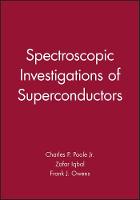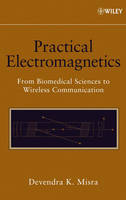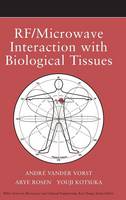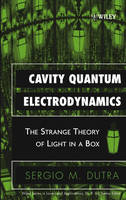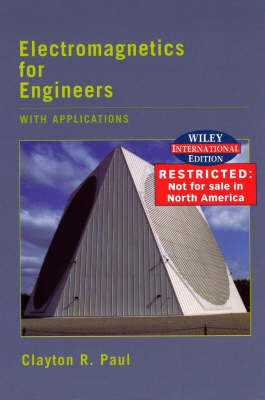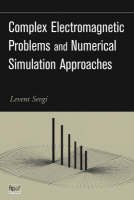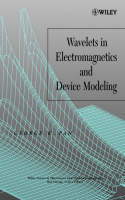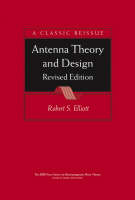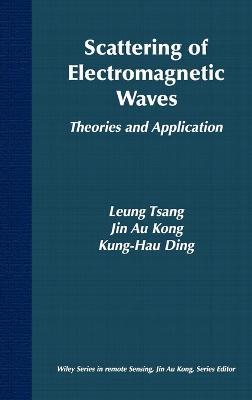NMR Spectroscopy Explained
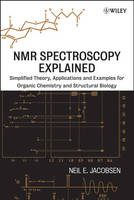 -15%
portes grátis
-15%
portes grátis
NMR Spectroscopy Explained
Simplified Theory, Applications and Examples for Organic Chemistry and Structural Biology
Jacobsen, Neil E.
John Wiley & Sons Inc
09/2007
688
Dura
Inglês
9780471730965
15 a 20 dias
1317
Acknowledgments xv
1 Fundamentalsof NMR Spectroscopy in Liquids 1
1.1 Introduction to NMR Spectroscopy 1
1.2 Examples: NMR Spectroscopy of Oligosaccharides and Terpenoids 12
1.3 Typical Values of Chemical Shifts and Coupling Constants 27
1.4 Fundamental Concepts of NMR Spectroscopy 30
2 Interpretation of Proton (1 H) NMR Spectra 39
2.1 Assignment 39
2.2 Effect of B o Field Strength on the Spectrum 40
2.3 First-Order Splitting Patterns 45
2.4 The Use of 1 H- 1 H Coupling Constants to Determine Stereochemistry and Conformation 52
2.5 Symmetry and Chirality in NMR 54
2.6 The Origin of the Chemical Shift 56
2.7 J Coupling to Other NMR-Active Nuclei 61
2.8 Non-First-Order Splitting Patterns: Strong Coupling 63
2.9 Magnetic Equivalence 71
3 NMR Hardware and Software 74
3.1 Sample Preparation 75
3.2 Sample Insertion 77
3.3 The Deuterium Lock Feedback Loop 78
3.4 The Shim System 81
3.5 Tuning and Matching the Probe 88
3.6 NMR Data Acquisition and Acquisition Parameters 90
3.7 Noise and Dynamic Range 108
3.8 Special Topic: Oversampling and Digital Filtering 110
3.9 NMR Data Processing-Overview 118
3.10 The Fourier Transform 119
3.11 Data Manipulation Before the Fourier Transform 122
3.12 Data Manipulation After the Fourier Transform 126
4 Carbon-13 (13 C) NMR Spectroscopy 135
4.1 Sensitivity of 13 C 135
4.2 Splitting of 13 C Signals 135
4.3 Decoupling 138
4.4 Heteronuclear Decoupling: 1 H Decoupled 13 C Spectra 139
4.5 Decoupling Hardware 145
4.6 Decoupling Software: Parameters 149
4.7 The Nuclear Overhauser Effect (NOE) 150
4.8 Heteronuclear Decoupler Modes 152
5 NMR Relaxation-Inversion-Recovery and the Nuclear Overhauser Effect (NOE) 155
5.1 The Vector Model 155
5.2 One Spin in a Magnetic Field 155
5.3 A Large Population of Identical Spins: Net Magnetization 157
5.4 Coherence: Net Magnetization in the x-y Plane 161
5.5 Relaxation 162
5.6 Summary of the Vector Model 168
5.7 Molecular Tumbling and NMR Relaxation 170
5.8 Inversion-Recovery: Measurement of T 1 Values 176
5.9 Continuous-Wave Low-Power Irradiation of One Resonance 181
5.10 Homonuclear Decoupling 182
5.11 Presaturation of Solvent Resonance 185
5.12 The Homonuclear Nuclear Overhauser Effect (NOE) 187
5.13 Summary of the Nuclear Overhauser Effect 198
6 The Spin Echo and the Attached Proton Test (APT) 200
6.1 The Rotating Frame of Reference 201
6.2 The Radio Frequency (RF) Pulse 203
6.3 The Effect of RF Pulses 206
6.4 Quadrature Detection Phase Cycling and the Receiver Phase 209
6.5 Chemical Shift Evolution 212
6.6 Scalar (J) Coupling Evolution 213
6.7 Examples of J-coupling and Chemical Shift Evolution 216
6.8 The Attached Proton Test (APT) 220
6.9 The Spin Echo 226
6.10 The Heteronuclear Spin Echo: Controlling J-Coupling Evolution and Chemical Shift Evolution 232
7 Coherence Transfer: INEPT and DEPT 238
7.1 Net Magnetization 238
7.2 Magnetization Transfer 241
7.3 The Product Operator Formalism: Introduction 242
7.4 Single Spin Product Operators: Chemical Shift Evolution 244
7.5 Two-Spin Operators: J-coupling Evolution and Antiphase Coherence 247
7.6 The Effect of RF Pulses on Product Operators 251
7.7 INEPT and the Transfer of Magnetization from 1 Hto 13 C 253
7.8 Selective Population Transfer (SPT) as a Way of Understanding INEPT Coherence Transfer 257
7.9 Phase Cycling in INEPT 263
7.10 Intermediate States in Coherence Transfer 265
7.11 Zero- and Double-Quantum Operators 267
7.12 Summary of Two-Spin Operators 269
7.13 Refocused INEPT: Adding Spectral Editing 270
7.14 DEPT: Distortionless Enhancement by Polarization Transfer 276
7.15 Product Operator Analysis of the DEPT Experiment 283
8 Shaped Pulses Pulsed Field Gradients and Spin Locks: Selective 1D NOE and 1D TOCSY 289
8.1 Introducing Three New Pulse Sequence Tools 289
8.2 The Effect of Off-Resonance Pulses on Net Magnetization 291
8.3 The Excitation Profile for Rectangular Pulses 297
8.4 Selective Pulses and Shaped Pulses 299
8.5 Pulsed Field Gradients 301
8.6 Combining Shaped Pulses and Pulsed Field Gradients: "Excitation Sculpting" 308
8.7 Coherence Order: Using Gradients to Select a Coherence Pathway 316
8.8 Practical Aspects of Pulsed Field Gradients and Shaped Pulses 319
8.9 1D Transient NOE using DPFGSE 321
8.10 The Spin Lock 333
8.11 Selective 1D ROESY and 1D TOCSY 338
8.12 Selective 1D TOCSY using DPFGSE 343
8.13 RF Power Levels for Shaped Pulses and Spin Locks 348
9 Two-Dimensional NMR Spectroscopy: HETCOR COSY and TOCSY 353
9.1 Introduction to Two-Dimensional NMR 353
9.2 HETCOR: A 2D Experiment Created from the 1D INEPT Experiment 354
9.3 A General Overview of 2D NMR Experiments 364
9.4 2D Correlation Spectroscopy (COSY) 370
9.5 Understanding COSY with Product Operators 386
9.6 2D TOCSY (Total Correlation Spectroscopy) 393
9.7 Data Sampling in t 1 and the 2D Spectral Window 398
10 Advanced NMR Theory: NOESY and DQF-COSY 408
10.1 Spin Kinetics: Derivation of the Rate Equation for Cross-Relaxation 409
10.2 Dynamic Processes and Chemical Exchange in NMR 414
10.3 2D NOESY and 2D ROESY 425
10.4 Expanding Our View of Coherence: Quantum Mechanics and Spherical Operators 439
10.5 Double-Quantum Filtered COSY (DQF-COSY) 447
10.6 Coherence Pathway Selection in NMR Experiments 450
10.7 The Density Matrix Representation of Spin States 469
10.8 The Hamiltonian Matrix: Strong Coupling and Ideal Isotropic (TOCSY) Mixing 478
11 Inverse Heteronuclear 2D Experiments: HSQC HMQC and HMBC 489
11.1 Inverse Experiments: 1 H Observe with 13 C Decoupling 490
11.2 General Appearance of Inverse 2D Spectra 498
11.3 Examples of One-Bond Inverse Correlation (HMQC and HSQC) Without 13 C Decoupling 501
11.4 Examples of Edited 13 C-Decoupled HSQC Spectra 504
11.5 Examples of HMBC Spectra 509
11.6 Structure Determination Using HSQC and HMBC 517
11.7 Understanding the HSQC Pulse Sequence 522
11.8 Understanding the HMQC Pulse Sequence 533
11.9 Understanding the Heteronuclear Multiple-Bond Correlation (HMBC) Pulse Sequence 535
11.10 Structure Determination by NMR-An Example 538
12 Biological NMR Spectroscopy 551
12.1 Applications of NMR in Biology 551
12.2 Size Limitations in Solution-State NMR 553
12.3 Hardware Requirements for Biological NMR 558
12.4 Sample Preparation and Water Suppression 564
12.5 1 H Chemical Shifts of Peptides and Proteins 570
12.6 NOE Interactions Between One Residue and the Next Residue in the Sequence 577
12.7 Sequence-Specific Assignment Using Homonuclear 2D Spectra 580
12.8 Medium and Long-Range NOE Correlations 586
12.9 Calculation of 3D Structure Using NMR Restraints 590
12.10 15 N-Labeling and 3D NMR 596
12.11 Three-Dimensional NMR Pulse Sequences: 3D HSQC-TOCSY and 3D TOCSY-HSQC 601
12.12 Triple-Resonance NMR on Doubly-Labeled (15 N 13 C) Proteins 610
12.13 New Techniques for Protein NMR: Residual Dipolar Couplings and Transverse Relaxation Optimized Spectroscopy (TROSY) 621
Appendix A: A Pictorial Key to NMR Spin States 627
Appendix B: A Survey of Two-Dimensional NMR Experiments 634
Index 643
Acknowledgments xv
1 Fundamentalsof NMR Spectroscopy in Liquids 1
1.1 Introduction to NMR Spectroscopy 1
1.2 Examples: NMR Spectroscopy of Oligosaccharides and Terpenoids 12
1.3 Typical Values of Chemical Shifts and Coupling Constants 27
1.4 Fundamental Concepts of NMR Spectroscopy 30
2 Interpretation of Proton (1 H) NMR Spectra 39
2.1 Assignment 39
2.2 Effect of B o Field Strength on the Spectrum 40
2.3 First-Order Splitting Patterns 45
2.4 The Use of 1 H- 1 H Coupling Constants to Determine Stereochemistry and Conformation 52
2.5 Symmetry and Chirality in NMR 54
2.6 The Origin of the Chemical Shift 56
2.7 J Coupling to Other NMR-Active Nuclei 61
2.8 Non-First-Order Splitting Patterns: Strong Coupling 63
2.9 Magnetic Equivalence 71
3 NMR Hardware and Software 74
3.1 Sample Preparation 75
3.2 Sample Insertion 77
3.3 The Deuterium Lock Feedback Loop 78
3.4 The Shim System 81
3.5 Tuning and Matching the Probe 88
3.6 NMR Data Acquisition and Acquisition Parameters 90
3.7 Noise and Dynamic Range 108
3.8 Special Topic: Oversampling and Digital Filtering 110
3.9 NMR Data Processing-Overview 118
3.10 The Fourier Transform 119
3.11 Data Manipulation Before the Fourier Transform 122
3.12 Data Manipulation After the Fourier Transform 126
4 Carbon-13 (13 C) NMR Spectroscopy 135
4.1 Sensitivity of 13 C 135
4.2 Splitting of 13 C Signals 135
4.3 Decoupling 138
4.4 Heteronuclear Decoupling: 1 H Decoupled 13 C Spectra 139
4.5 Decoupling Hardware 145
4.6 Decoupling Software: Parameters 149
4.7 The Nuclear Overhauser Effect (NOE) 150
4.8 Heteronuclear Decoupler Modes 152
5 NMR Relaxation-Inversion-Recovery and the Nuclear Overhauser Effect (NOE) 155
5.1 The Vector Model 155
5.2 One Spin in a Magnetic Field 155
5.3 A Large Population of Identical Spins: Net Magnetization 157
5.4 Coherence: Net Magnetization in the x-y Plane 161
5.5 Relaxation 162
5.6 Summary of the Vector Model 168
5.7 Molecular Tumbling and NMR Relaxation 170
5.8 Inversion-Recovery: Measurement of T 1 Values 176
5.9 Continuous-Wave Low-Power Irradiation of One Resonance 181
5.10 Homonuclear Decoupling 182
5.11 Presaturation of Solvent Resonance 185
5.12 The Homonuclear Nuclear Overhauser Effect (NOE) 187
5.13 Summary of the Nuclear Overhauser Effect 198
6 The Spin Echo and the Attached Proton Test (APT) 200
6.1 The Rotating Frame of Reference 201
6.2 The Radio Frequency (RF) Pulse 203
6.3 The Effect of RF Pulses 206
6.4 Quadrature Detection Phase Cycling and the Receiver Phase 209
6.5 Chemical Shift Evolution 212
6.6 Scalar (J) Coupling Evolution 213
6.7 Examples of J-coupling and Chemical Shift Evolution 216
6.8 The Attached Proton Test (APT) 220
6.9 The Spin Echo 226
6.10 The Heteronuclear Spin Echo: Controlling J-Coupling Evolution and Chemical Shift Evolution 232
7 Coherence Transfer: INEPT and DEPT 238
7.1 Net Magnetization 238
7.2 Magnetization Transfer 241
7.3 The Product Operator Formalism: Introduction 242
7.4 Single Spin Product Operators: Chemical Shift Evolution 244
7.5 Two-Spin Operators: J-coupling Evolution and Antiphase Coherence 247
7.6 The Effect of RF Pulses on Product Operators 251
7.7 INEPT and the Transfer of Magnetization from 1 Hto 13 C 253
7.8 Selective Population Transfer (SPT) as a Way of Understanding INEPT Coherence Transfer 257
7.9 Phase Cycling in INEPT 263
7.10 Intermediate States in Coherence Transfer 265
7.11 Zero- and Double-Quantum Operators 267
7.12 Summary of Two-Spin Operators 269
7.13 Refocused INEPT: Adding Spectral Editing 270
7.14 DEPT: Distortionless Enhancement by Polarization Transfer 276
7.15 Product Operator Analysis of the DEPT Experiment 283
8 Shaped Pulses Pulsed Field Gradients and Spin Locks: Selective 1D NOE and 1D TOCSY 289
8.1 Introducing Three New Pulse Sequence Tools 289
8.2 The Effect of Off-Resonance Pulses on Net Magnetization 291
8.3 The Excitation Profile for Rectangular Pulses 297
8.4 Selective Pulses and Shaped Pulses 299
8.5 Pulsed Field Gradients 301
8.6 Combining Shaped Pulses and Pulsed Field Gradients: "Excitation Sculpting" 308
8.7 Coherence Order: Using Gradients to Select a Coherence Pathway 316
8.8 Practical Aspects of Pulsed Field Gradients and Shaped Pulses 319
8.9 1D Transient NOE using DPFGSE 321
8.10 The Spin Lock 333
8.11 Selective 1D ROESY and 1D TOCSY 338
8.12 Selective 1D TOCSY using DPFGSE 343
8.13 RF Power Levels for Shaped Pulses and Spin Locks 348
9 Two-Dimensional NMR Spectroscopy: HETCOR COSY and TOCSY 353
9.1 Introduction to Two-Dimensional NMR 353
9.2 HETCOR: A 2D Experiment Created from the 1D INEPT Experiment 354
9.3 A General Overview of 2D NMR Experiments 364
9.4 2D Correlation Spectroscopy (COSY) 370
9.5 Understanding COSY with Product Operators 386
9.6 2D TOCSY (Total Correlation Spectroscopy) 393
9.7 Data Sampling in t 1 and the 2D Spectral Window 398
10 Advanced NMR Theory: NOESY and DQF-COSY 408
10.1 Spin Kinetics: Derivation of the Rate Equation for Cross-Relaxation 409
10.2 Dynamic Processes and Chemical Exchange in NMR 414
10.3 2D NOESY and 2D ROESY 425
10.4 Expanding Our View of Coherence: Quantum Mechanics and Spherical Operators 439
10.5 Double-Quantum Filtered COSY (DQF-COSY) 447
10.6 Coherence Pathway Selection in NMR Experiments 450
10.7 The Density Matrix Representation of Spin States 469
10.8 The Hamiltonian Matrix: Strong Coupling and Ideal Isotropic (TOCSY) Mixing 478
11 Inverse Heteronuclear 2D Experiments: HSQC HMQC and HMBC 489
11.1 Inverse Experiments: 1 H Observe with 13 C Decoupling 490
11.2 General Appearance of Inverse 2D Spectra 498
11.3 Examples of One-Bond Inverse Correlation (HMQC and HSQC) Without 13 C Decoupling 501
11.4 Examples of Edited 13 C-Decoupled HSQC Spectra 504
11.5 Examples of HMBC Spectra 509
11.6 Structure Determination Using HSQC and HMBC 517
11.7 Understanding the HSQC Pulse Sequence 522
11.8 Understanding the HMQC Pulse Sequence 533
11.9 Understanding the Heteronuclear Multiple-Bond Correlation (HMBC) Pulse Sequence 535
11.10 Structure Determination by NMR-An Example 538
12 Biological NMR Spectroscopy 551
12.1 Applications of NMR in Biology 551
12.2 Size Limitations in Solution-State NMR 553
12.3 Hardware Requirements for Biological NMR 558
12.4 Sample Preparation and Water Suppression 564
12.5 1 H Chemical Shifts of Peptides and Proteins 570
12.6 NOE Interactions Between One Residue and the Next Residue in the Sequence 577
12.7 Sequence-Specific Assignment Using Homonuclear 2D Spectra 580
12.8 Medium and Long-Range NOE Correlations 586
12.9 Calculation of 3D Structure Using NMR Restraints 590
12.10 15 N-Labeling and 3D NMR 596
12.11 Three-Dimensional NMR Pulse Sequences: 3D HSQC-TOCSY and 3D TOCSY-HSQC 601
12.12 Triple-Resonance NMR on Doubly-Labeled (15 N 13 C) Proteins 610
12.13 New Techniques for Protein NMR: Residual Dipolar Couplings and Transverse Relaxation Optimized Spectroscopy (TROSY) 621
Appendix A: A Pictorial Key to NMR Spin States 627
Appendix B: A Survey of Two-Dimensional NMR Experiments 634
Index 643

